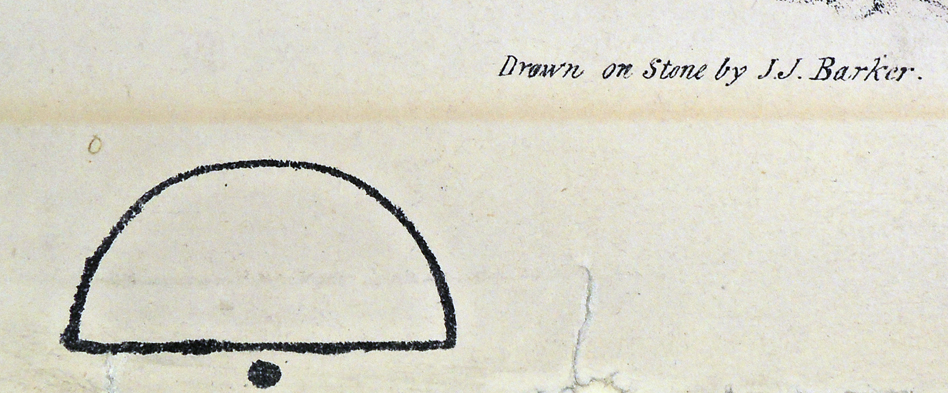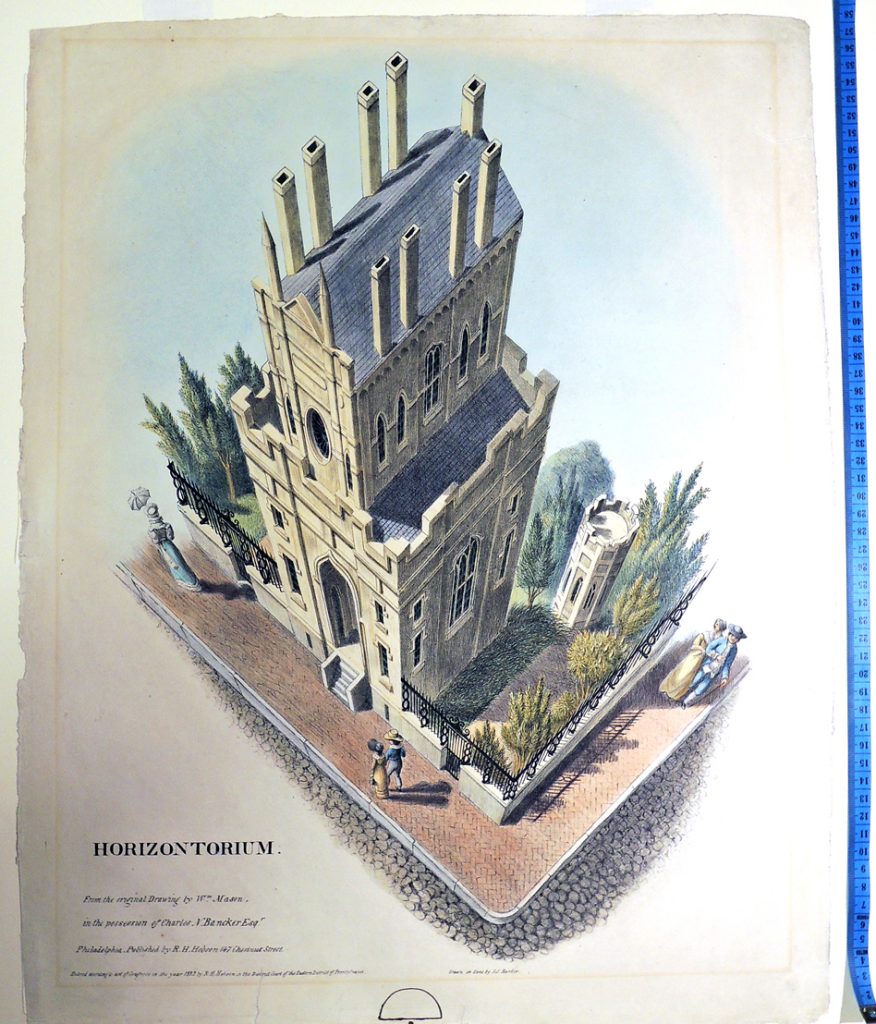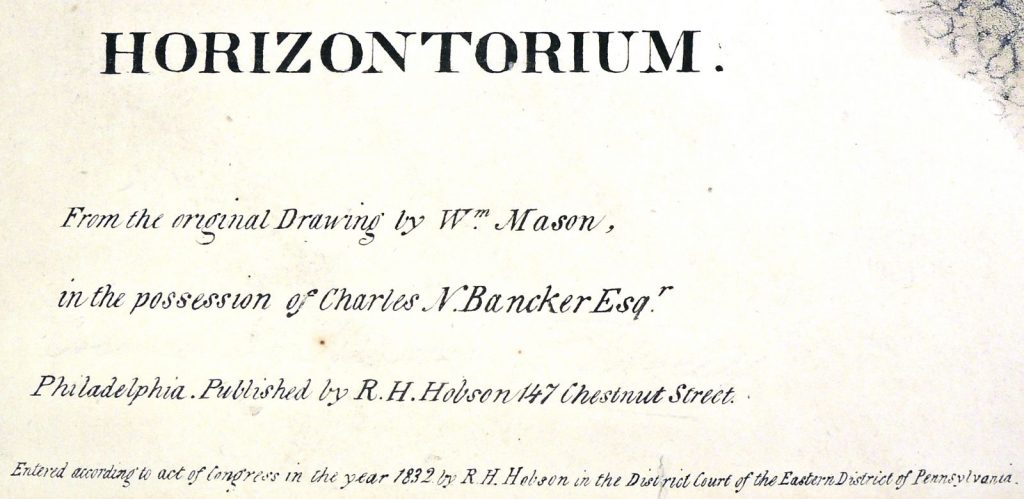 John Jesse Barker after a design by William Mason (active 1822–1860), Horizontorium, 1832. Lithograph. Published by R. H. Hobson, 147 Chestnut Street, Philadelphia, PA. Graphic Arts Collection GAX 2017- in process [photographed at an angle]
John Jesse Barker after a design by William Mason (active 1822–1860), Horizontorium, 1832. Lithograph. Published by R. H. Hobson, 147 Chestnut Street, Philadelphia, PA. Graphic Arts Collection GAX 2017- in process [photographed at an angle]
Before the advent of 3D glasses, print collectors enjoyed optical views like this one to experience the world in more dimension than the usual flat image. This print was to be laid on a flat table and each viewer meant to put their chin on the bottom center so as to see the building at an extreme angle. This is one version of anamorphosis, sometimes also designed to be viewed in a circular reflection.
Here are two other examples from the Graphic Arts Collection collection: https://graphicarts.princeton.edu/2015/03/25/anamorphic-images/ and https://blogs.princeton.edu/graphicarts/2008/02/anamorphic_self-portrait_by_ch.html .
 Note the spot for your chin, if you want optimal 3D viewing.
Note the spot for your chin, if you want optimal 3D viewing.
The building seen here has been identified as the Gothic-style bank erected in 1808 after the designs of Benjamin Henry Latrobe at the southwest corner of Fourth and Chestnut streets in Philadelphia. The Philadelphia Bank or Bank of Philadelphia (predecessor of the Philadelphia National Bank), was formed in 1803 and incorporated in 1804 as the unofficial bank of the commonwealth. Unfortunately the building was lost in 1836, not long after this print was made.
Researchers believe this print is the only recognized American “Horizontorium” and I have not been able to prove them wrong. The Library Company of Philadelphia, which also owns a copy of this print, suggests that the probable printer was Childs & Inman. For more information, try Nicholas B. Wainwright, History of the Philadelphia National Bank; a century and a half of Philadelphia banking, 1803-1953 (Philadelphia, 1953). HG2613.P5P7 and Nicholas B. Wainwright, Philadelphia in the romantic age of lithography: an illustrated history of early lithography in Philadelphia, with a descriptive list of Philadelphia scenes made by Philadelphia lithographers before 1866 (Philadelphia: Historical Society of Pennsylvania, 1958 (1970 printing)) Graphic Arts Collection (GA) Oversize 2008-0429Q
A letter in St. Nicholas magazine, v. 6 (October 1879) p.844, suggests that “a good way to look at this picture is to take a piece of card-board, about three inches long, and bend the bottom of it, in the manner shown in this diagram. Two holes should be made in the card, and the one in the lower bent portion should be so placed that the point of sight can be seen through it. The hole in the upright portion should be 2 inches from the bottom, or the angle formed by the bent part. Through this upper hole the picture should be viewed, when all its peculiar perspective—or, rather, want of perspective—will disappear.” Read the entire piece in GoogleBooks: https://books.google.com/books?id=jqYzAQAAMAAJ&pg=PA844&dq=horizontorium+philadelphia&hl=en&sa=X&ved=0ahUKEwjfksD87abRAhUBVCYKHZj-B4UQ6AEINDAF#v=onepage&q=horizontorium%20philadelphia&f=false
Posted in honor of John Berger, 1926-2017, author of Ways of Seeing (London: British Broadcasting Corporation; Harmondsworth, Penguin, 1972). Firestone N7420 .W28 1972


